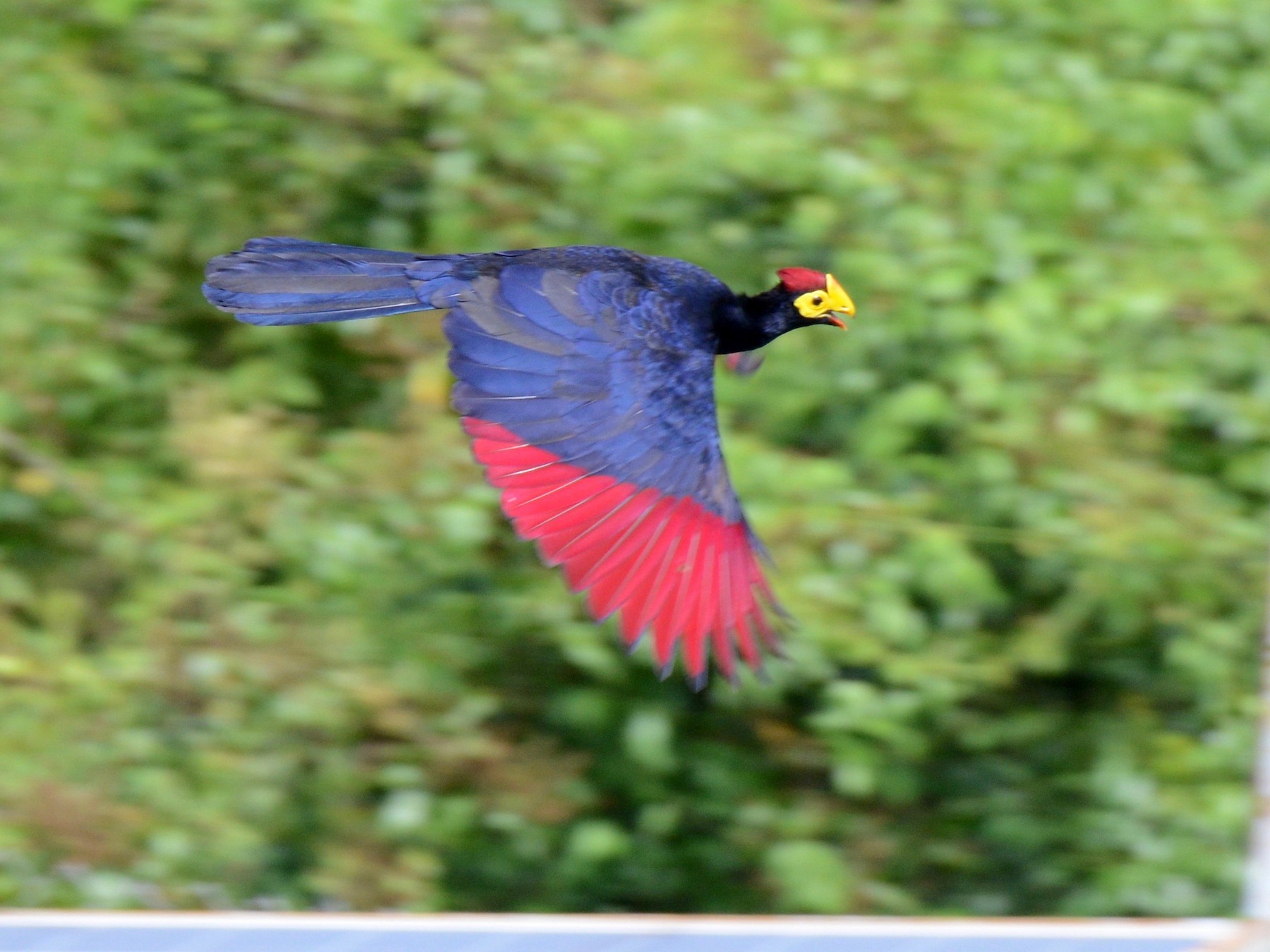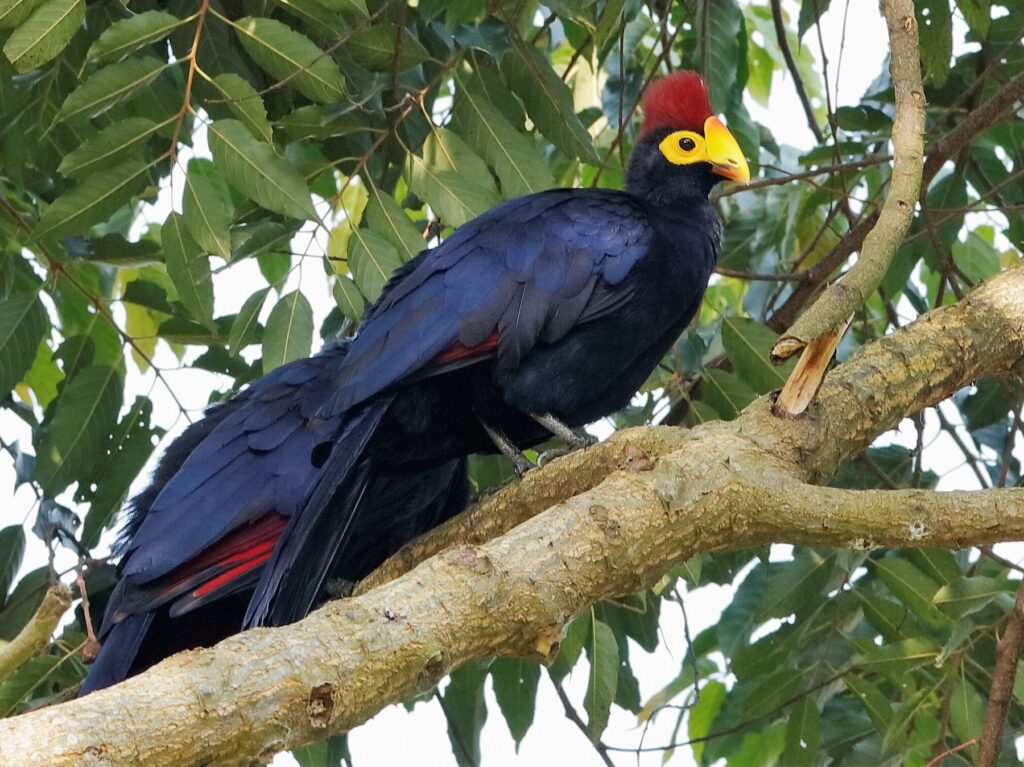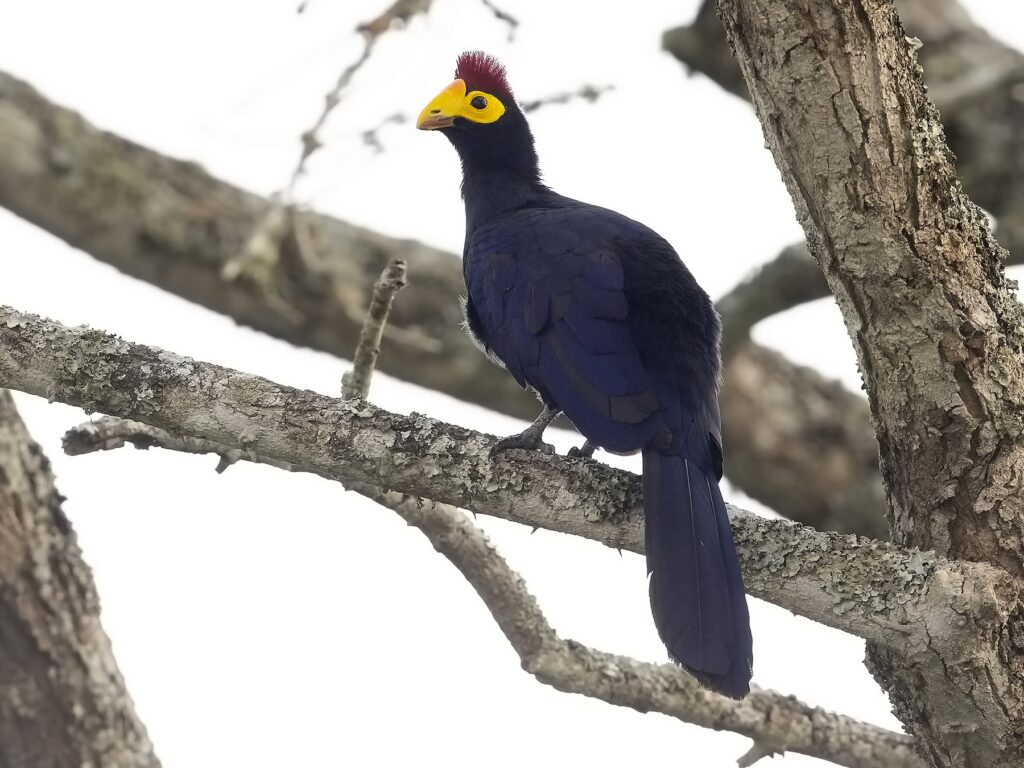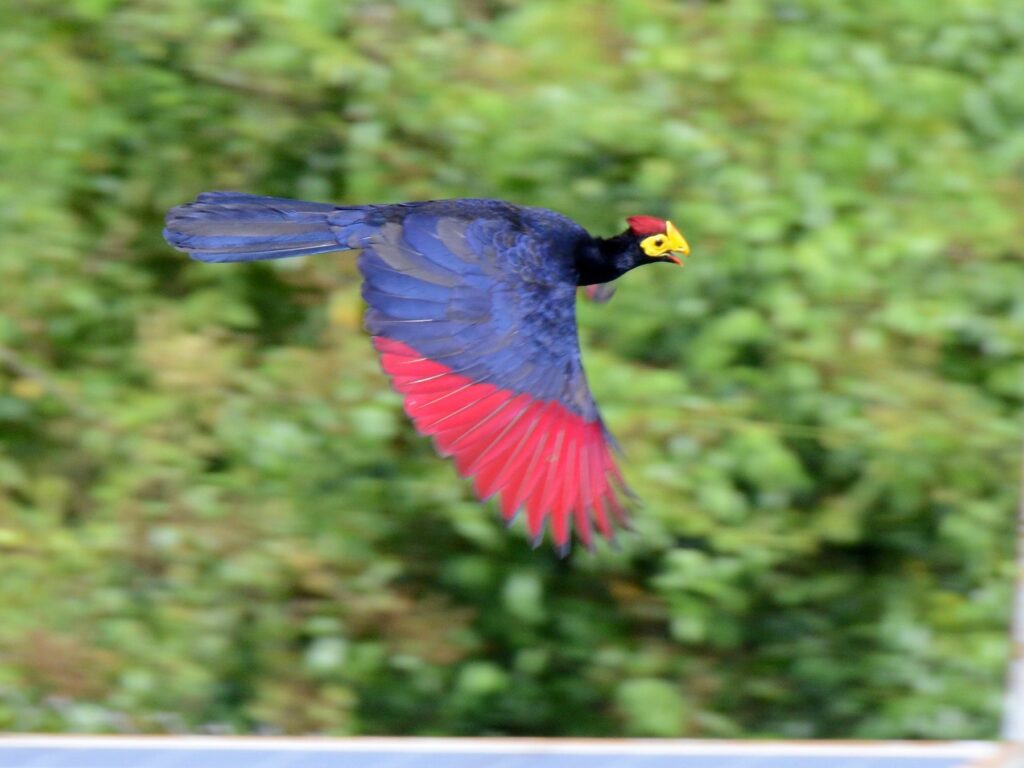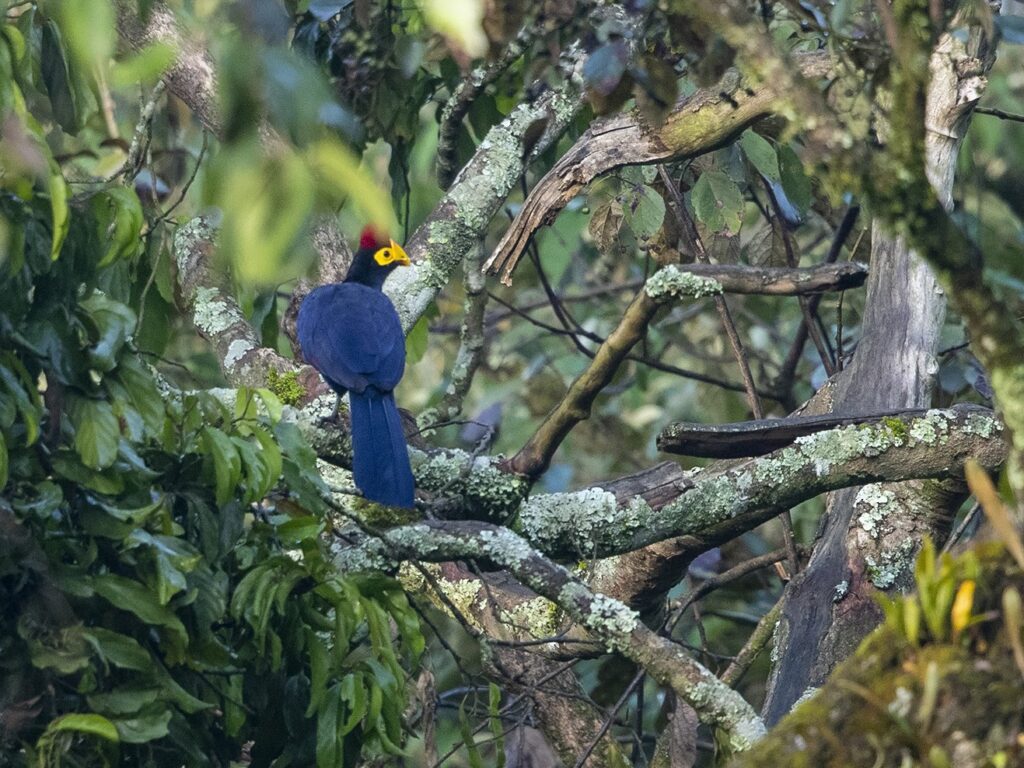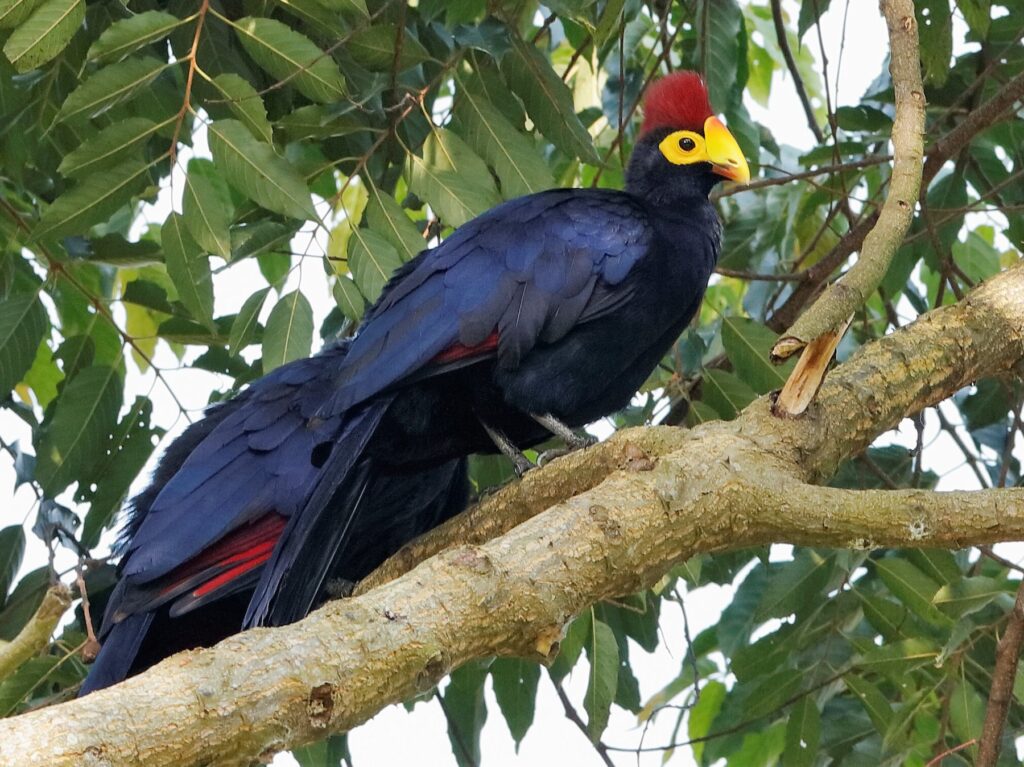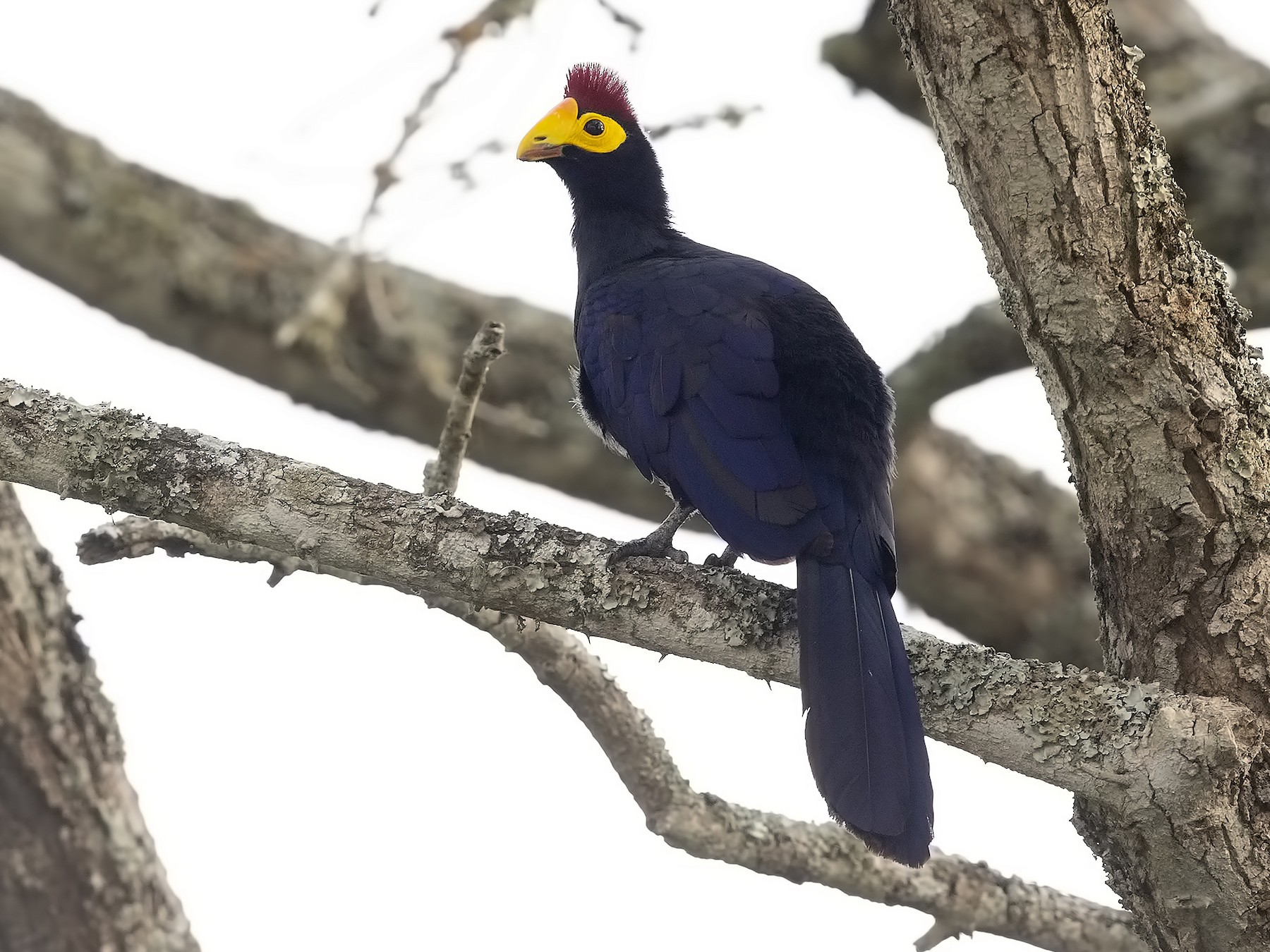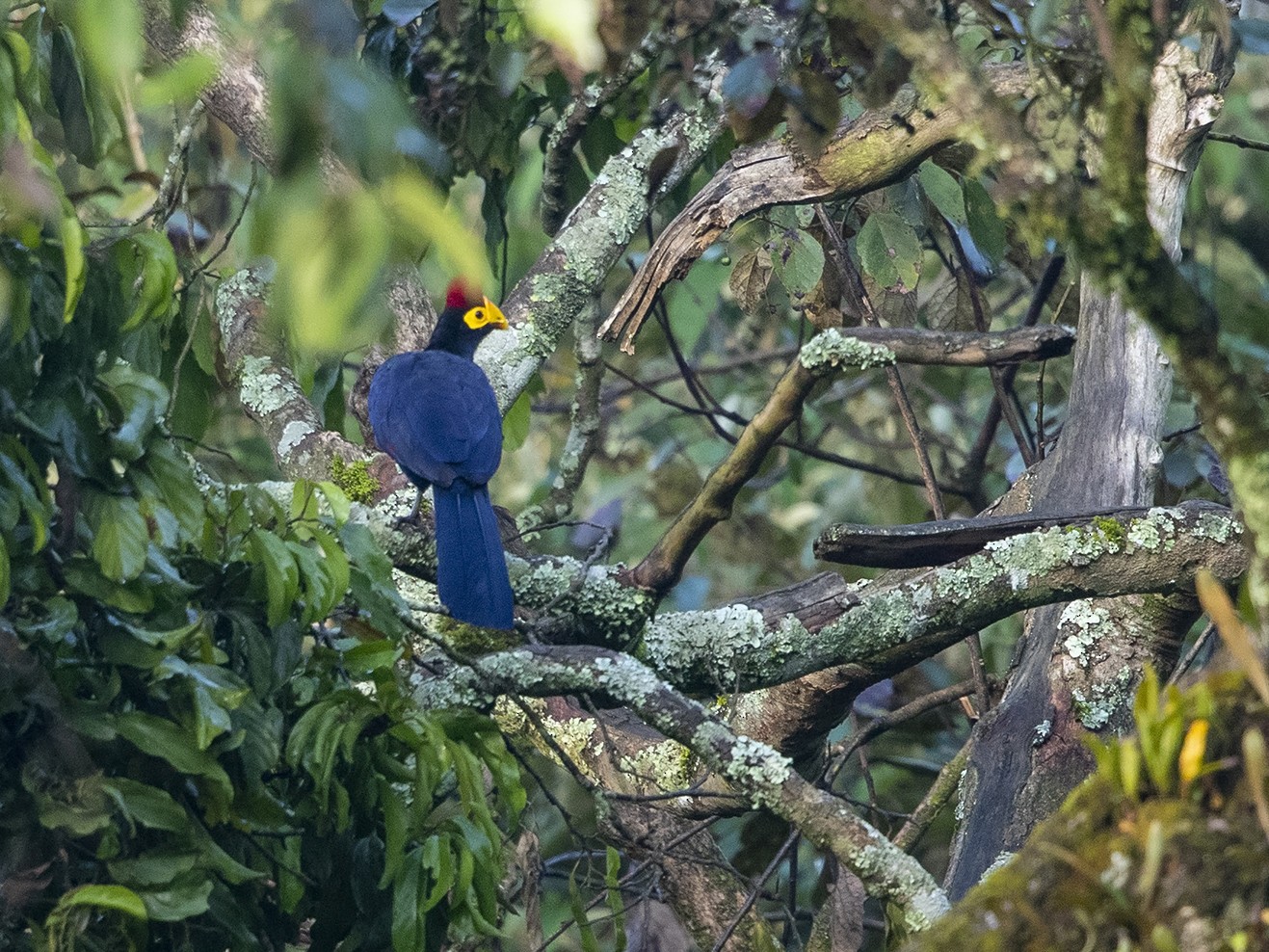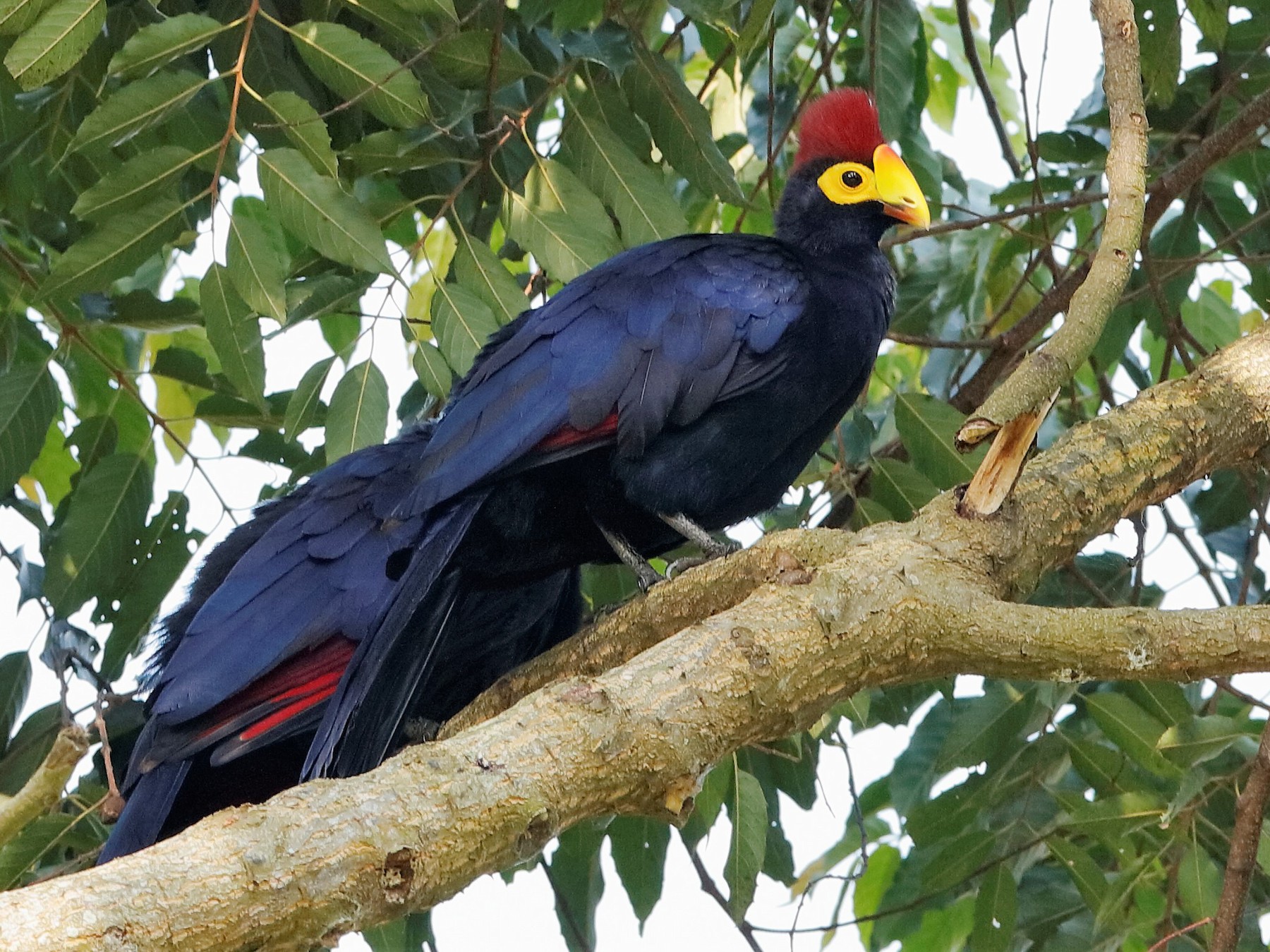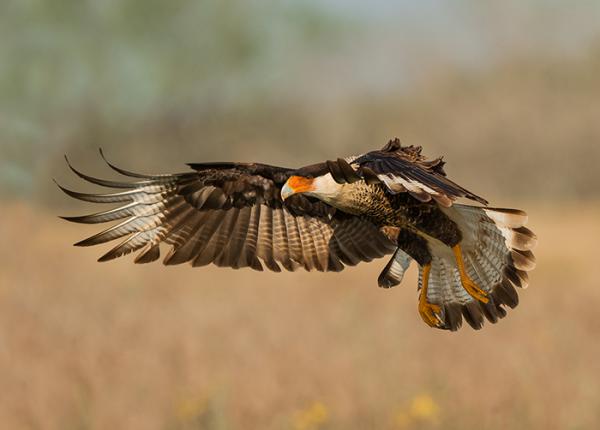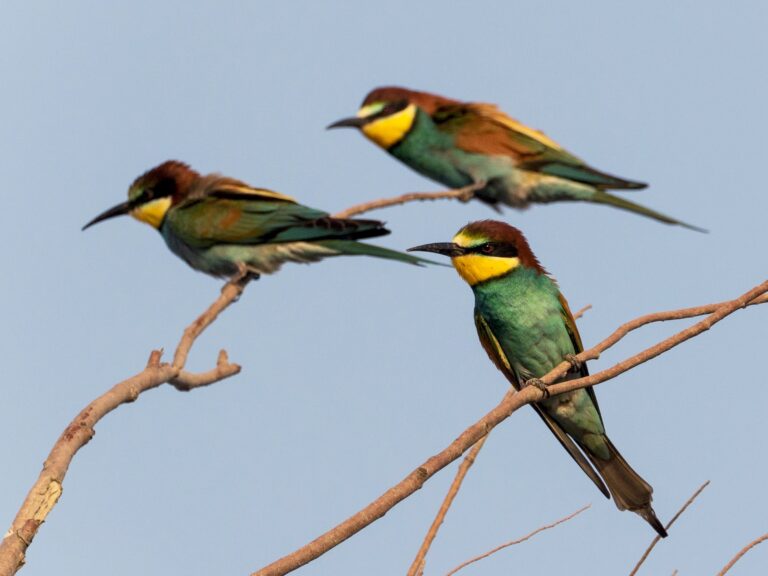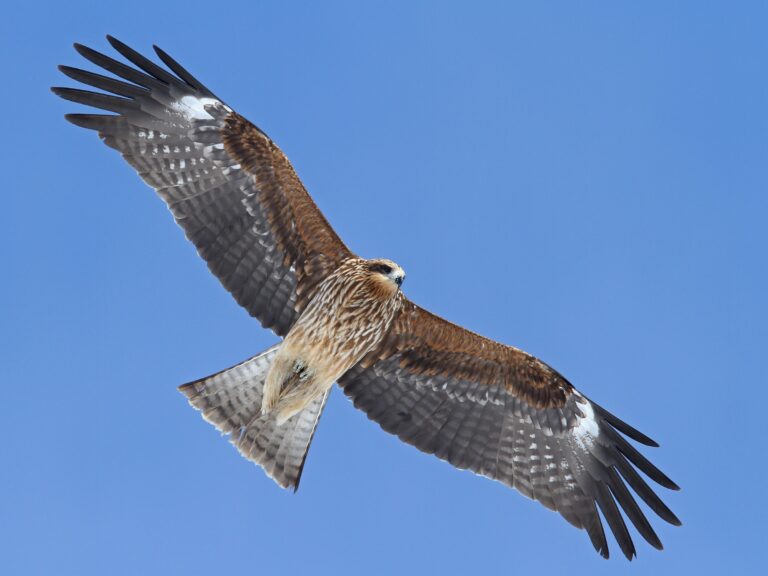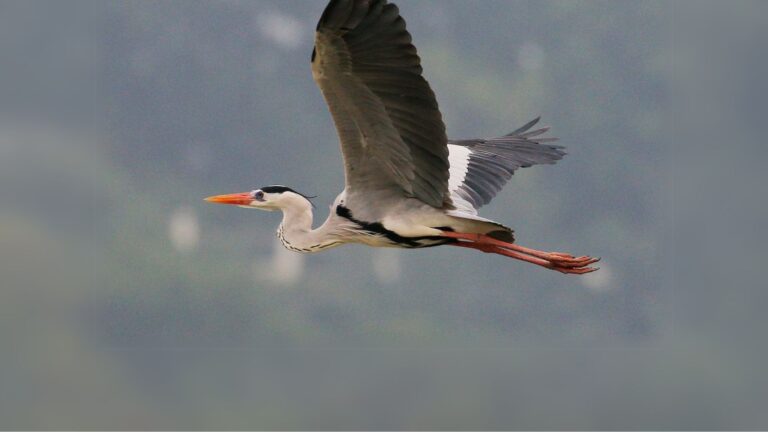Ross’s Turaco: Discover the Vibrant Beauty of Africa’s Colorful Bird
Lady Ross’s Turaco—sometimes just called Ross’s Turaco or Musophaga rossae—turns heads with its wild blue and crimson feathers. It’s easily one of the most colorful birds you’ll spot in Africa.
This vibrant bird comes from Central Africa, and it’s got a look and personality that make it stand out. Birdwatchers and aviaries everywhere seem to love its bold colors and that unmistakable crest.
Ross’s Turacos are medium-sized, part of the Musophagidae family. You’ll find them in forests stretching from Cameroon down to Angola, usually hanging out in pairs or small groups.
They mostly snack on fruit, but you might catch them nibbling leaves and flowers too—pretty unusual for birds. In captivity, Lady Ross’s Turaco will even eat a mix of leafy stuff, which sets it apart from other turacos.
Want to dig into their quirky habits? Check out these scientific observations.
People love their bright looks and chill attitude, so you’ll spot them in zoos or through the lenses of photographers. Curious about how folks care for them? Here’s a peek at Disney’s Animal Kingdom.
Key Takeaways
- Ross’s Turaco stands out with vivid blue and red feathers.
- They call Central African forests home and have some pretty interesting eating habits.
- These birds draw crowds in wildlife media and zoos alike.
Taxonomy and Identification
Lady Ross’s Turaco, or Ross’s Turaco, is a real showstopper from Africa with jaw-dropping plumage and unique features. Its look, quirks, and spot in the turaco family tree make it pretty easy to pick out from its cousins.
Classification and Nomenclature
Scientists call it Musophaga rossae, and it’s in the family Musophagidae with all the other turacos. The name “Musophaga” literally means “banana eater” in Greek, though it’s not actually bananas they’re after most of the time.
Musophaga rossae doesn’t have any officially recognized subspecies. Its range is pretty broad across central Africa. The name “Lady Ross’s Turaco” honors a British colonial officer’s wife—kind of a tradition in bird naming, for better or worse.
More details on its taxonomy and where you’ll find it globally are in this AMNH American Museum Novitates article.
Physical Characteristics
Lady Ross’s Turaco is famous for its wild colors. The body shines a deep blue or purple, and the head sports a small, bright crimson crest.
When it flies, those red flight feathers on the wings stand out. It’s about 45 to 50 centimeters (18 to 20 inches) long and can weigh up to 350 grams.
The bill is short, thick, yellow, and curves downward. Males and females look almost identical, which makes it tricky to tell them apart at a glance.
Its toes are semi-zygodactylous—two face forward, two back—giving it a solid grip on branches.
Recognition Among Turacos
In the turaco family, Lady Ross’s Turaco really pops thanks to its unique crest and that intense blue-purple. Most other turacos stick to green or grey, with nothing quite as bold.
The crimson crest is a real giveaway—you don’t see that on many other turacos. The red primary feathers, especially when the bird’s in flight, are another telltale sign.
Those colors and the crest shape set it apart from relatives like the White-cheeked or Livingstone’s Turaco. Curious about the differences? Take a look at this taxonomic review.
Geographical Distribution
Lady Ross’s Turaco sticks to a pretty specific slice of Africa, thriving in certain countries and habitats. Central and East Africa are home turf for these birds.
Native Range and Countries
They’re native to Central and a bit of East Africa. You’ll find them in Uganda, Angola, Democratic Republic of the Congo, Central African Republic, Cameroon, and Gabon.
Some smaller populations live in northern Zambia, Rwanda, Burundi, and South Sudan. Each country offers its own spin on the right environment, but they all fall in that central African band.
They don’t venture south into Botswana or east into Kenya and Tanzania, at least according to recent studies. So, Lady Ross’s Turaco is pretty regional compared to some of its relatives.
If you want to see how their range stacks up, check out this phylogeography and classification research.
Habitat Types
Lady Ross’s Turaco prefers places with plenty of trees and a decent amount of rain. Forests, woodlands, and riverbanks are where they’re most at home.
They’ll use both old-growth forests and areas where the trees have grown back after clearing. In Angola and the DRC, you might spot them nesting or foraging in savannas mixed with woodland.
They avoid dry, open places—you won’t see them in deserts or bare grasslands. These birds really need tree canopies for food and shelter.
Fruit, leaves, and flower buds found in wooded environments make up most of their meals. Their need for trees shapes where they can actually live.
Range in East and Central Africa
The biggest populations live in the heart of Africa, especially in the Democratic Republic of the Congo, southern Central African Republic, and Cameroon.
They’re harder to spot along the edges of this range, like eastern Uganda or western Tanzania. In those places, wooded environments aren’t as common, so turacos don’t spread as far.
In Burundi, Rwanda, and South Sudan, they mostly show up in little forest patches that are still hanging on. Their survival there really depends on whether those forests stick around.
In Gabon and northern Angola, where the habitat’s just right, you’ll find more of them. That’s probably thanks to the better habitat conditions in those spots.
Behavior and Ecology
Ross’s Turaco (or Lady Ross’s Turaco, if you prefer) isn’t just a pretty face—it’s lively and curious, too. This Central African native has some quirky habits, especially when it comes to food, social life, and communication.
Diet and Feeding Habits
Ross’s Turaco mostly eats fruit. In the wild, figs, berries, and soft fruits are their go-to snacks, often found at the forest edge or deep in the trees.
They play a big role as seed dispersers, helping new plants sprout up wherever they roam. Their strong, flexible toes let them climb and cling to branches while searching for food.
They’re not just fruit fanatics, though. Sometimes, they’ll eat leaves, flowers, or even the odd insect if fruit is scarce.
In captivity, they should get a mix of chopped fruits—bananas, grapes, apples—and a few leafy greens to mimic their wild diet. There’s more on this in the development and care article.
Social Structure and Communication
Ross’s Turaco usually hangs out in small family groups or pairs. They’re social and use lots of different calls to keep in touch, especially when moving through thick foliage.
One of their calls is loud and repetitive, easy to pick out if you’re in their home forest. They love to chase and hop around in the branches together, showing off their playful side.
During breeding season, they form strong pair bonds and help each other raise chicks. Sometimes, they’ll interact or even compete with other fruit-eating birds.
In mixed-species spots, you might see them getting into it with birds like the White-bellied Go-away-bird. Communication keeps their group tight, helps them defend territory, and gives them a heads-up about danger.
Reproduction and Breeding
Lady Ross’s Turaco puts on a bit of a show when it comes to courtship and takes breeding pretty seriously. These birds form monogamous pairs, and both parents get involved in raising their chicks.
Nesting Habits
They build their nests high up in dense foliage, using twigs and lining them with softer plant material. Both the male and female pitch in to get the nest just right.
Location matters—a lot. They pick spots with good cover to protect eggs and chicks from predators.
In captivity, they’ll use nesting platforms or baskets, sticking to the same materials they’d use in the wild. During breeding, turacos get territorial and may use displays or loud calls to warn other pairs away.
After the nest is finished, the female typically lays two eggs per clutch.
Incubation and Chick Development
Incubation takes about 21 to 24 days. Both parents share the job, taking turns to keep the eggs warm.
They swap out in short shifts, so the eggs never sit unattended for long. When the chicks finally hatch, they’re blind and completely dependent on their parents for warmth and food.
Adults feed them regurgitated fruit and insects in those early days. After three weeks or so, the chicks start growing feathers and get a bit more mobile in the nest.
Chicks usually fledge—meaning they leave the nest—after four to five weeks. Parents keep caring for the fledglings, showing them how to find food and avoid trouble.
Zoos and aviaries have managed to breed Lady Ross’s Turacos by creating safe enclosures and closely watching their breeding habits.
Ross’s Turaco in Photography and Media
Ross’s Turaco—some folks call it Lady Ross’s Turaco—shows up all over photography and media. You’ll spot images of this striking bird in wildlife magazines, educational materials, and creative projects.
Stock Photos and Editorial Options
Photos of Ross’s Turaco are out there on lots of stock photo platforms. You get choices for editorial or commercial use, depending on what you need.
- Stock photos usually come in high-resolution formats like 300 dpi—great for print or web.
- Editorial images work for news, science, or educational projects. You can’t use them to sell stuff or promote brands. These often pop up in bird articles or conservation materials, like in watchbird journals.
- Commercial images are licensed for ads, merchandise, or branding—pretty flexible if you’re running a business.
When you pick a photo, check out the composition, lighting, and whether the bird’s in its natural spot. Most sites let you filter by usage, resolution, and style, which is honestly pretty helpful.
Vectors, 360° Panoramic Images, and Videos
Beyond photos, there are vectors, 360° panoramas, and videos to consider. Vectors work well for big prints or digital design since you can scale them up without losing quality.
- 360° panoramic images let you step inside the bird’s world for a really immersive look.
- Videos capture Ross’s Turacos in action—feeding, calling, just doing their thing. Short clips like these are handy for documentaries, classrooms, or even social media.
- Lots of educational resources, from illustrated books to digital media, use both photos and vectors. You’ll see examples in publications like Beat about the bush: birds.
Pick the format that fits your project best. For creative work, vectors and videos can add a lot of visual punch.
Licensing: Royalty Free and Rights Managed
You’ll find most Ross’s Turaco images are either royalty free or rights managed.
- Royalty free means you pay once and reuse the image in different projects, usually with fewer strings attached.
- Rights managed licenses are stricter. They might limit how long you can use the image, where it appears, or how many times you use it. That’s something to keep in mind for exclusive or commercial projects.
Editorial-only images have extra limits and aren’t for advertising. Always double-check the license before you download or use any media. Watch for ISO standards and resolution, too—they matter for print quality. Choose a license that matches your needs and budget.
Frequently Asked Questions
Lady Ross’s Turaco is a colorful bird, famous for its unique calls, vivid feathers, and social habits. You’ll find it in certain parts of Africa, and it has pretty specific needs if you keep one in captivity.
What does a Lady Ross’s Turaco sound like?
Lady Ross’s Turaco calls with a loud, barking sound that’s hard to miss. It’s a series of deep, repetitive notes you can easily pick out in the forest, and the birds use these to talk to others in their group.
What is the natural habitat preferred by Ross’s Turaco?
You’ll usually find this bird in forests, woodlands, and savannas across Central Africa. It prefers thick foliage for hiding and foraging, and it’s especially common near water and tall trees.
What is the diet of Lady Ross’s Turaco?
Lady Ross’s Turaco mostly eats fruit—figs are a favorite. They’ll also nibble on leaves, flowers, and sometimes insects. In captivity, people feed them chopped fruits and leafy greens to keep their diet balanced.
Can Ross’s Turacos be kept as pets, and if so, what are the considerations?
It’s possible to keep them as pets, but they need special care. Ross’s Turaco needs a roomy, secure aviary with lots of perches and hiding spots. Owners have to provide a varied fruit diet and let the birds move around. If you notice behavioral changes or weight loss, those could be health problems—something that’s mentioned in some studies.
How does Ross’s Turaco differ from other Turaco species?
Ross’s Turaco stands out with its bright violet-blue body, red crest, and yellow bill. It’s usually more social and active than some other turacos. Sure, other species have their own color patterns or quirks, but Lady Ross’s Turaco is one of the most eye-catching and recognizable, as described in detail on turaco species.
What conservation status is Ross’s Turaco currently classified as?
Ross’s Turaco isn’t considered endangered. It’s listed as Least Concern, mainly because it’s still pretty common in the wild.
That said, habitat loss or trapping for trade could mess with its numbers if people aren’t careful. It’s something worth keeping an eye on, honestly.
